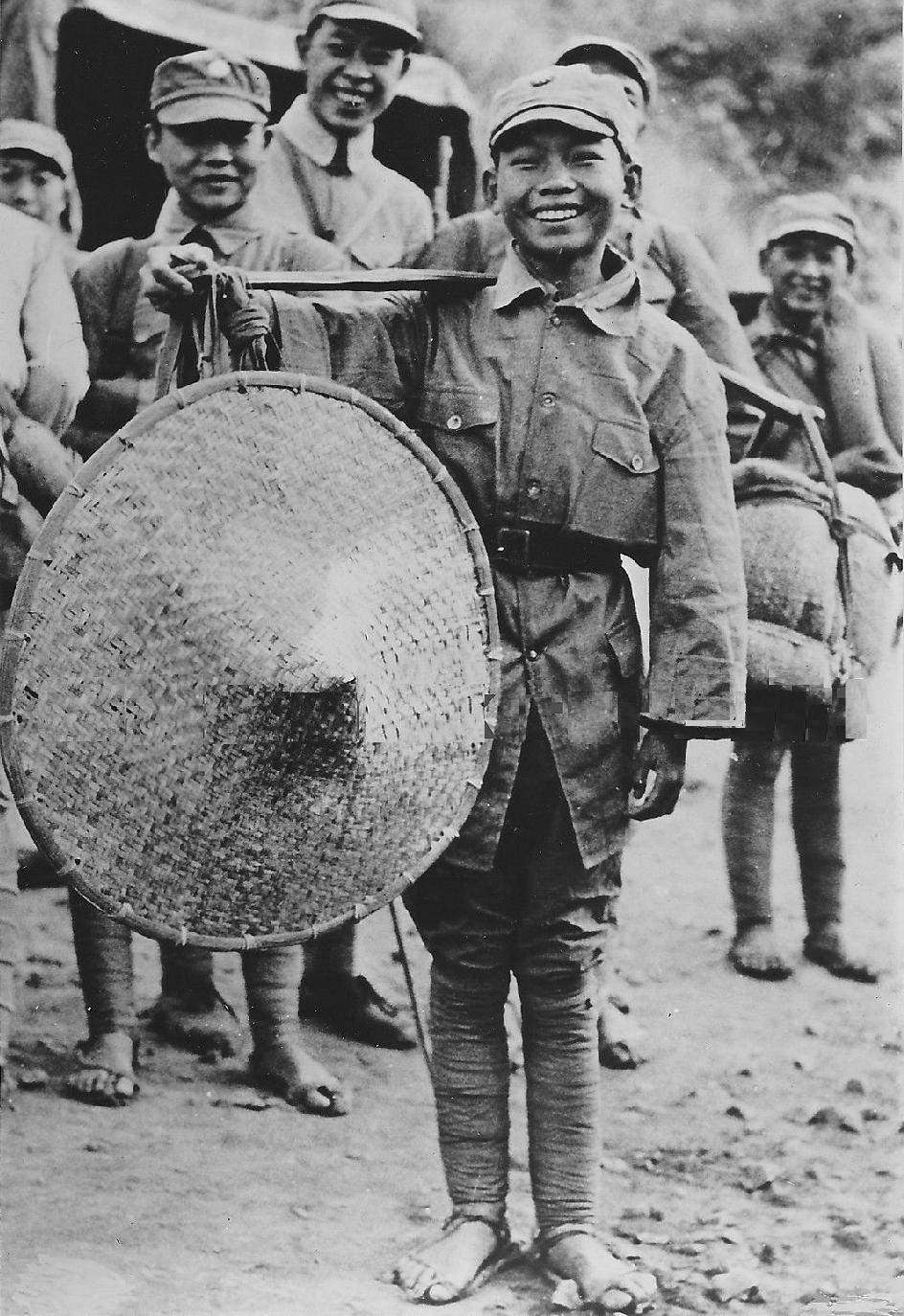
World War II: Burma--Northern Burma Campaign (1942-45)

Figure 1.--Here we have a seen from the Chinese Y Force along the Saween River, the front linr between the Chinese and Japanese in northern Burma. The press caption read, "Young Chinese Soldiers Carry Supplies to the Salween Front: Chinese youths, serving with the Chinese Sixth Army, carry supplies for the offensive against the Japanese in the Salween River area, Yunnan Province. Chinese women and children are doing their pat in bringing defeat to the Japanese. Many of the best soldiers in the Chinese Armies are youngsters in ther teens. Chinese forces west of the Salween River drive toward aunction with U.S. Lieutnant General Joseph W. Stillwell toops n Burma. Paying tribute to the Chinese Armies, Gen. Stillwell said, on July 17, 1944, that Chinese troops 'has confounded their critics and delighted their friends by their steady determined advance which has gone on now for six months ... to a line that had once seemed hopeless to attemp to reach." The photograh was dated July 18, 1944.
|
|
Gen. Stillwell was seen as one of the most most capable corps commander in the U.S. Army. He would have played a major role in the European theater, but over his objections, President Roosevelt and U.S. Army Chief of Staff Gen. Marshall selected him to be the senior U.S. commander in China and the CBI Theater. It was a commitment to help keep China in the War. He became the Chief of Staff to Generalissimo Chiang Kai-shek. The northern Burma campaign was acceptable to Chiang because unlik British opertions in cntrl Burma, it was ot designed to return Burma to British colonial rule, but to get American Lend Lease supplies flowing to China again. Stillwell began to retrain and resupply his Chinese troops, tuning them into some of the most effective units in the Nationalist Army. Chinese troops in China proper were performing very poorly. Stillwell proved that well led and properly equipped and supplied, the Chinese were more than capable of taking on the Japanese. Realizing that it would take some time for the British to retake central Burma and reopen the Burma Road, Stillwell reasoned that the weakened Japanese forces could no longer hold northern Burma. And that if the Allies could retake northern Burma, they could build a road connecting the rail heads in India to the northern streach of the old Burma Road, restablishing a land connection with China. Here Stillwell would order the Chinese troops in China on the Salween River (Y Force) to attack south, his Chinese troops in India (X Force) to attack east, and insert Merrill's Marauderss in the Japanese rear. The X Force was the portion of the Nationalist Army's Expeditionary Force that retreated from Burma into India (1942). After the retreat with Stillwell they regrouped at Ramgarh Cantonment in Bihar (modern Jharkhand State). They were expanded to five-Division strength (Chinese New 30th, New 22nd, New 38th, 14th and 50th Divisions). There they were retrained by American instructors and resupplied by the British. Each divisions had about 15,000 troops for a total of 75,000 for the whole force. The were organized into the New 1st Army and the New 6th Army. The Chinese forces which reentered Burma from Yunnan in the north were designated the Y Force. And as X Force attacked east, they crossed the Salween River and attacked south. Merrill’s Marauders or Unit Galahad was the 5307th Composite Unit, was a United States Army long range penetration special operations group trained in jungle warfare. Their goal was to capture the Japanese airfield at Myitkyina. With some Chinese X Force units they took the airfield (May 17, 1944). They were so depleted and suffering from Malaria and other ilnesses that they could not take tetown of Myitkyina itself which the Japanese had just reinforced. Here American air power came to the rescue, air lifting an X Force division ro the newly taken airfield. With the Myitkyina airfied in American hands, the United States could use its air power advantage to dominate northern Burma. And with northern Burma in Allied hands, the Ledo Road could be built to connect with the Old Burma Road.
CIH -- WW II

Navigate the CIH World War II Section:
[Return to Main reopening the Burma Road page ]
[Return to Main Burma World War II page]
[Return to Main World War II Indian infrastructure page]
[Return to Main Burma page]
[Return to Main World War II country page]
[Biographies]
[Campaigns]
[Children]
[Countries]
[Deciding factors]
[Diplomacy]
[Geo-political crisis]
[Economics]
[Home front]
[Intelligence]
[POWs]
[Resistance]
[Race]
[Refugees]
[Technology]
[Totalitarian powers]
[Bibliographies]
[Contributions]
[FAQs]
[Images]
[Links]
[Registration]
[Tools]
[Return to Main World War II page]
[Return to Main war essay page]
Created: 7:00 AM 12/16/2016
Last updated: 7:00 AM 12/16/2016



